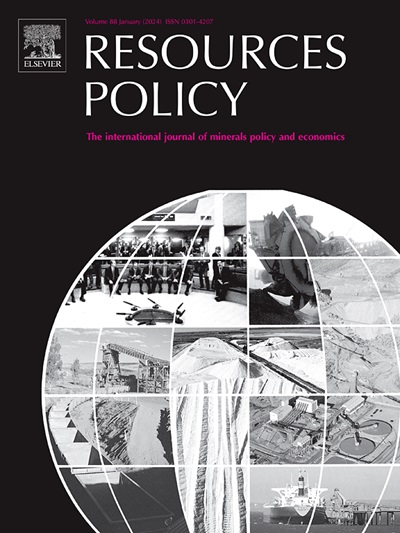预测不可预见的事情?矿业公司的ESG风险管理
IF 10.2
2区 经济学
0 ENVIRONMENTAL STUDIES
引用次数: 0
摘要
本文的目的是通过分析采矿项目首次提交给当局时预期的影响,以及在采矿现场观察到的危机或关键事件,来调查采矿部门环境、社会和治理(ESG)风险的可预测性。深入分析了发生在加拿大19个不同矿区的57起重大可持续性事件,以及公司和利益相关者在之前的风险分析中预测或未能预测这些事件的方式,使我们能够绘制出该行业的主要影响,并强调公司和利益相关者有效预测这些事件的能力参差。通过一个综合模型分析得到的结果,该模型具有四种主要的风险可预测性配置:高可见性风险(公司和利益相关者都有良好的预期)、利益相关者危险信号(只有利益相关者识别的风险)、企业远见(只有公司识别的风险)和黑天鹅(公司和利益相关者都忽视的风险)。本文对ESG风险的可预见性、污染企业将此类风险纳入其规划的不确定方式以及关键可持续性事件的管理等方面的文献做出了重大贡献。本文还对未来研究的实际意义和途径进行了探讨。本文章由计算机程序翻译,如有差异,请以英文原文为准。
Anticipating the unforeseeable? ESG risk management in mining companies
The aim of this article is to investigate the foreseeability of environmental, social and governance (ESG) risks in the mining sector by analyzing the impacts anticipated when mining projects were first submitted to the authorities, and crises or critical incidents observed ex-post at mining sites. An in-depth analysis of 57 critical sustainability incidents that occurred at 19 different Canadian mining sites, and of the way in which companies and stakeholders anticipated or failed to anticipate them in prior risk analyses, enables us to map the main impacts of this industry and to highlight the uneven ability of companies and stakeholders to effectively anticipate them. The results obtained were analyzed through an integrative model with four main configurations of risk foreseeability: high-visibility risks (good anticipation by both companies and stakeholders), stakeholder red flags (risks identified by stakeholders only), corporate foresight (risks identified by companies only) and black swans (risks neglected by both companies and stakeholders). This article makes substantial contributions to the literature on the foreseeability of ESG risks, the uncertain ways that polluting companies integrate such risks into their planning, and the management of critical sustainability incidents. Practical implications and avenues for future research are also developed.
求助全文
通过发布文献求助,成功后即可免费获取论文全文。
去求助
来源期刊

Resources Policy
ENVIRONMENTAL STUDIES-
CiteScore
13.40
自引率
23.50%
发文量
602
审稿时长
69 days
期刊介绍:
Resources Policy is an international journal focused on the economics and policy aspects of mineral and fossil fuel extraction, production, and utilization. It targets individuals in academia, government, and industry. The journal seeks original research submissions analyzing public policy, economics, social science, geography, and finance in the fields of mining, non-fuel minerals, energy minerals, fossil fuels, and metals. Mineral economics topics covered include mineral market analysis, price analysis, project evaluation, mining and sustainable development, mineral resource rents, resource curse, mineral wealth and corruption, mineral taxation and regulation, strategic minerals and their supply, and the impact of mineral development on local communities and indigenous populations. The journal specifically excludes papers with agriculture, forestry, or fisheries as their primary focus.
 求助内容:
求助内容: 应助结果提醒方式:
应助结果提醒方式:


